
Ochna is a genus comprising 79 species of evergreen trees, shrubs and shrublets belonging to the flowering plant family Ochnaceae. These species are native to tropical woodlands of Africa, Madagascar, the Mascarenes and Asia. Species of this genus are usually called ochnas, bird's-eye bushes or Mickey-mouse plants, a name derived from the shape of the drupelet fruit. The name of this genus comes from the Greek word ὄχνη (ókhnē), used by Theocritus and meaning "wild pear", as the leaves are similar in appearance. Some species, including Ochna integerrima and O. serrulata, are cultivated as decorative plants.

Myrica is a genus of about 35–50 species of small trees and shrubs in the family Myricaceae, order Fagales. The genus has a wide distribution, including Africa, Asia, Europe, North America and South America, and missing only from Australia. Some botanists split the genus into two genera on the basis of the catkin and fruit structure, restricting Myrica to a few species, and treating the others in Morella.

Vismia is a genus of flowering plants in the family Hypericaceae. Members of the genus are small trees and shrubs found in tropical and subtropical areas of Central America and South America. Including the countries of Belize, Bolivia, Brazil, Colombia, Costa Rica, Ecuador, El Salvador, French Guiana, Guatemala, Guyana, Honduras, Mexico, Nicaragua, Panamá, Peru, Suriname, Trinidad-Tobago and Venezuela.

The genus of the myrrhs, Commiphora, is the most species-rich genus of flowering plants in the frankincense and myrrh family, Burseraceae. The genus contains approximately 190 species of shrubs and trees, which are distributed throughout the (sub-) tropical regions of Africa, the western Indian Ocean islands, the Arabian Peninsula, India, and South America. The genus is drought-tolerant and common throughout the xerophytic scrub, seasonally dry tropical forests, and woodlands of these regions.
Afroligusticum is a genus of flowering plants belonging to the carrot family, Apiaceae.

Kirkia is a genus of plant in family Kirkiaceae. It was previously placed in family Simaroubaceae, but was transferred into Kirkiaceae, together with Pleiokirkia, because these genera produce neither quassinoids nor limonoids.
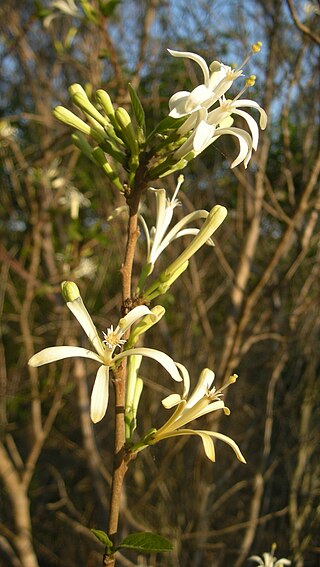
Turraea is a genus of plants in the family Meliaceae, native to the Old World tropics and subtropics.
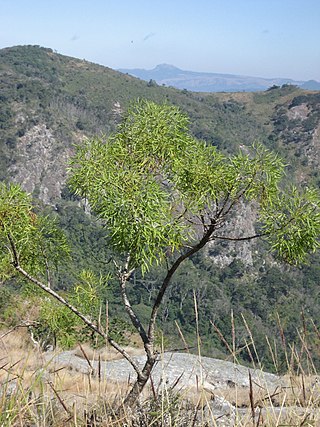
Heteromorpha is a genus of plants within the family Apiaceae. Its species are native to southern and tropical Africa and the southwestern Arabian Peninsula.
Oreoschimperella is a genus of flowering plants in the umbellifer family Apiaceae, native to Kenya, Ethiopia, and the Arabian Peninsula. Poorly studied, they are closely related to Trachyspermum.
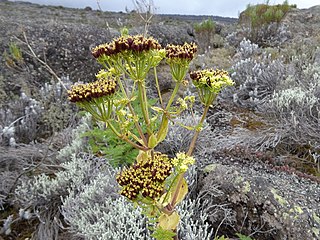
Afrosciadium is a genus of flowering plants belonging to the carrot family, Apiaceae. It was split from the genus Peucedanum in 2008 by P.J.D. Winter, et al.

Loeseneriella is a genus of flowering plants belonging to the family Celastraceae.
Gerardiina is a genus of flowering plants belonging to the family Orobanchaceae.
Majidea is a genus of flowering plants belonging to the family Sapindaceae.

Ritchiea is a genus of flowering plants belonging to the family Capparaceae.
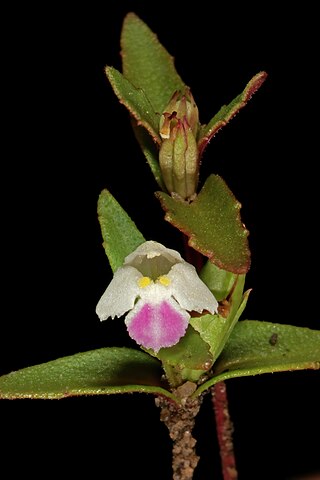
Linderniella is a genus of flowering plants belonging to the family Linderniaceae.
Nelsia is a genus of flowering plants belonging to the family Amaranthaceae. It is with the Amaranthoideae subfamily.

Rogeria is a genus of plants in the Pedaliaceae family consisting of several species, with a native range extending from the island of Cape Verde to Eritrea, Namibia to the Cape Provinces.
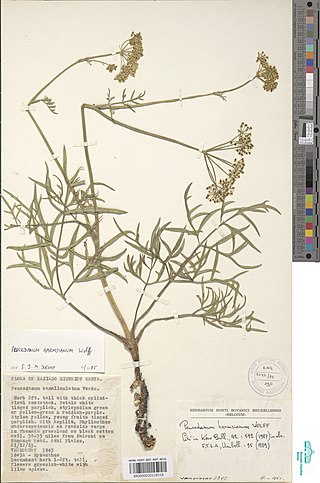
Afrosciadium harmsianum is a member of the carrot family, Apiaceae. It is a perennial tuberous herb native to east tropical Africa, while the subspecies A. h. australe is endemic to northern Tanzania.












